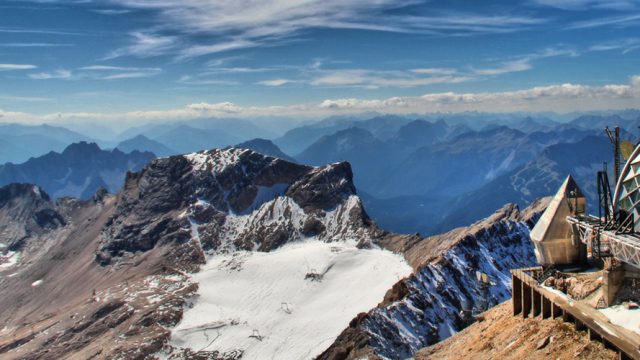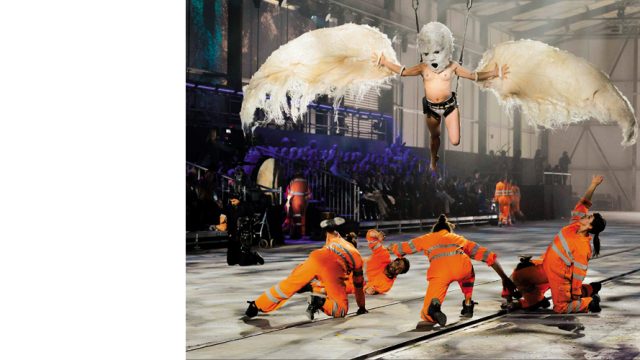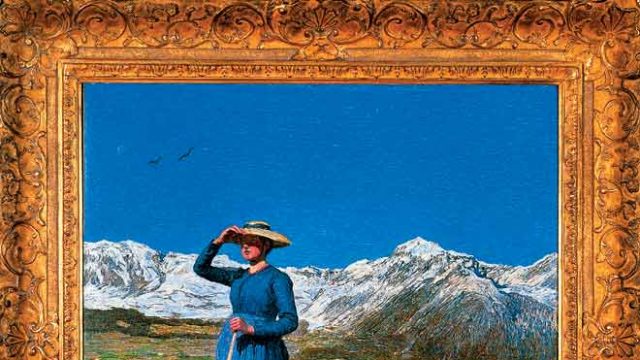The rain fell hard, the road was slippery and the steep Alpine climb was bare of traffic.
I stopped the car. When driving in the Alps, it’s easy to become accustomed to magnificent scenery. But in the darkness and rain, when one edge of the road stares into a deep valley and the other merges into a cliff that rises 300 metres until it reaches forested slopes, the roads are scary. On the backseat slept my niece and wife, tired after a day of walking on the anguine streets of Chamonix. I parked the car on one side of the road and sat quietly, sipping hot tea from a flask. Outside, the raindrops formed intricate veins over the glass window of the car. In that quiet moment, I reflected on the trip so far.
It was the summer of 2016, when my 13-year-old niece, Vanshika, was visiting us in Sweden. Inexplicably, she remained uninterested and listless even after a few weeks. Somehow, the Swedish spring weather and the laidback atmosphere had not appealed to her, and she continually sought refuge in her smartphone. All the plans we had made for her to visit the Swedish countryside were masterfully destroyed with monosyllabic responses and irate swipes at the phone.

Then one day, I heard her listening to Deep Purple’s ‘Smoke on the Water’. I asked her if she knew the story behind the song. She remained silent, and I took that as my cue to carry on. Deep Purple wrote this song in the Swiss town of Montreux after a casino in which they had performed was burned down.
“And Freddie Mercury chose this town to die,” I added. “The place better be worth dying in,” she said. I didn’t know if it was, for I had never been there. Late into that night, Priya and I crafted a plan to stun my niece: we would take her to Montreux! Given that Vanshika was gradually acquiring a taste for rock music and learning French in school, we hoped she would like this town with heavy French influence and a deep association with music.
I took to searching hotels and making dinner reservations in advance, carefully constructing the vacation in my head. Vanshika’s presence and cavalier attitude reminded me of the years when I first started travelling. In those years, travel trained me in street-smartness; I savoured the unfamiliarity that followed boarding a bus to an unknown destination, with just enough money to get by. Later, once I moved to the Nordics, a military preciseness took over my travels, pushing the days of unplanned adventures into the recesses of my memory. Now, once again, I was caught up in the frenzy of an unplanned adventure, and decided to go rogue. Thus, a day later, when we landed in Geneva, we only had a rental car booked. Everything else we would decide on the fly.
In Geneva, Vanshika and I wanted to visit CERN. But a guided tour to CERN needs to be booked months in advance. Disappointed, we decided not to linger in Geneva and take the highway to Montreux, 90km away. As we drove along Lake Geneva towards Montreux, the water glittered under a bright sun, the grapevines of Lausanne’s vineyards swayed in the still nippy wind and the yachts shilly-shallied in the placid ice-blue water. Less than an hour later, we were in the town centre, defined by a long curving promenade that runs alongside Lake Geneva.
Lakeside Montreux seemed to be largely populated by old people doing nothing; the A memorable ferry ride on Lake Geneva young ones appeared to be outsiders flocking around the statue of Freddie Mercury. But Montreux kept us occupied with its lake cruises, food, and walks through the old town. Hypnotised by the crispness of the late afternoon sun, we sat eating ice-cream and watching the comings and goings on the waterfront. We wanted to do little more than sit in the blazing sunshine and stare out at the blue lake, mountains and cloudless sky, all blurring into one another. But for the distraction of Chateau de Chillon—it rose from the water and shimmered like an apparition.

We decided to take a tour of this castle. An impressive medieval gothic structure, the Chateau looks exactly like a castle should—laced with dungeons, turrets and labyrinthine passageways. Outside, tourists, mostly Chinese, took selfies against the well-favoured Swiss background. We walked the serpentine quarters of the castle before I began to realise that historic sites were only faintly tempting for my teenaged niece.
As the first day came to an end, I learnt that the underlying philosophy of ad-hoc travel at times conflicts with the planning on which a large part of the rest of the world runs. For instance, we spent a long time hunting for accommodation. Montreux, and most parts of Switzerland, do not have good Airbnb availability, and hotels were fully booked at this time. We eventually found a hostel outside town. We slept in a dorm in bunk beds, the cosiness of which, I discovered, is an indisputable formula to bring together a family. In the warmth of the dorm, Vanshika talked unceasingly. “Can we see Mount Pilatus?” she asked as we nestled deep into our blankets to catch some sleep. I looked at my wife and winked.
First day in Switzerland, and things were already looking up. Next morning, Vanshika occupied the front seat of the car, and we drove to where she pointed.
With only 80,000 residents, the picture-book city of Lucerne has considerable appeal for tourists. The city is dominated by old squares, intriguing churches, lakeside promenades, a 13th-century tower with views of the town and surroundings, and the vastly impressive peak of Mount Pilatus. Amidst this, an impossibly scenic wooden bridge, called Kapellbrücke (Chapel Bridge), runs across the river Reuss. Pilatus was covered in clouds, so we decided to walk around the centre and on Kapellbrücke. Across the bridge, we wandered into the Old Town, which with its narrow lanes and quaint squares seems designed for strolling and shopping.
Unlike the rest of Switzerland, Lucerne is a Catholic city, reflected in the brilliance of the Jesuit Church, a stone’s throw from the Old Town centre. We stepped inside briefly, for I thought the young girl would want to return to the flurry of the town swiftly. Instead, she occupied a secluded bench and sat quietly. As I observed her, I realised that what I had mistaken for reclusiveness borne out of disinterest was perhaps a silence germinating from a deeper place, rumination over the new experiences she was being exposed to every day. Perhaps her fiddling with the smartphone was a way to be in touch with the normalcy of the life she had left behind in India.
That evening, while it rained outside, we cooked dinner in the apartment we had rented. The drizzle continued through the night, and a dull mist settled outside. Despite the subtracted visibility, we boarded a cable car to Mount Pilatus, took a long walk in the woods at a pit-stop and decided to drive on to Furka Pass. This last is a steep climb full of hairpin bends that make the road both scenic and challenging. But the Pass was closed to traffic.
That evening, we drove to Interlaken and ended up in the Alpine town of Wengen. It was uncharacteristically vacant. That suited us fine, for these mountain towns can be terribly expensive when saturated with tourists. We decided to walk the trails that originate from here. The tracks merged into one another and diverged again to lead to the beautiful sights of Mönchblick as well as Hunnenfluh, which overlooked the starkness of Eiger, Mönch and Jungfrau. As the sun lost shape, we folded the evening away and walked back to Wengen.

The road to Zermatt from Interlaken is a tapestry of solitude and magnificent scenery. We drove for hours. An unsuspected toll led us to an open train to ferry us from Kandersteg to Goppenstein. Sitting inside the car, placed precariously on the open train that vibrated and rattled through an unlit tunnel, is akin to taking a rollercoaster ride—despite the Swiss having put the rail tracks on rubber shoes to absorb vibration. This unplanned escape led to excitement and laughter over the 50-minute ride. To reach Zermatt, we needed a clean-energy car. Since we didn’t have one, we took a train from the town of Tasch. Though some of the highest peaks in Switzerland tower over Zermatt, it is primarily defined by Matterhorn, whose devilishly pointy peak bulges like a shark’s fin over the town. When we reached Zermatt, Matterhorn was also hidden behind clouds and no part of its famous jagged outline was visible. Consoling ourselves with hot chocolate, we were back on the road towards our next night-stop, in the French mountain town of Chamonix.
Over the years, Chamonix has evolved into a touristy haven featuring a well-functioning tourist office with free wifi, a McDonald’s that is as crowded as anywhere in the world, a church whose bell tolls every hour—driving the pet poodles crazy every time it does, and a Sunday afternoon church parade that recruits those eager to display their skills with the mouth-organ.
We wandered around before deciding on our next stop for the night. After Wengen, Zermatt and Chamonix, Vanshika had taken a liking for Alpine villages, and searched for a layover in the mountains. Rather adventurously, we booked one at a remote location in the village of Hermance.
Now on the way, we were lost in the mountains. As I waited in silence, while my wife and niece slept, a herd of Red Deer appeared out of nowhere and surrounded the car. Isolation accentuated the fear, and I turned on the engine and pressed the accelerator. By now, the herd had occupied the road; they stared right at me, terrified and aggressive. Things could have gone terribly wrong. But for the hand that rested on my shoulder.
“Turn the lights off,” Vanshika whispered, “Don’t drive, just wait. They will go away.” I did so. The herd walked towards the car, sniffed it and walked away.

That day, I learnt something about my niece: she was more attuned to nature, more in harmony with her being and surroundings than I was. She taught me that in difficult, unplanned situations, sometimes taking a pause to recalibrate is the right thing to do. As we drove up the hill, we sighted the solitary hut far up in the mountain. Late into the night, we lit a bonfire and sat outside in silence, not an uncomfortable reticence but a patient stillness.
In the warmth of the burning wood, a realisation dawned: unplanned journeys make time stand still, forcing us to live in the present moment. Such journeys also bring people closer. After years of having thought of myself as a solitary traveller charting my own way, this impulsive road-trip taught me that travelling can also be about strengthening relationships.
The Information
Getting There
Swiss Air, Qatar Airways, Emirates
and Etihad operate hopping flights from Delhi to Geneva from about ₹50,000 for a return trip.
Getting Around
Major car rental companies, such as Avis, Europcar and Budget have offices in Geneva. It is possible
to rent a car on an Indian driving licence. While renting a car, a good option could be to rent a mobile wi-fi device instead of GPS. Rough distances between the places that I covered
in this trip are:
• Geneva–Montreux: 90km
• Montreux–Lucerne: 200km
• Lucerne–Interlaken: 70km
• Interlaken–Zermatt: 115km
• Zermatt–Chamonix: 144km
• Chamonix–Hermance: 92km
Where To Stay
Switzerland is an expensive country and so is the food. If you plan to stay in an apartment on a tight budget, cooking is the cheapest option. Vegetarians can find options such as pizza or fondue. We chose to stay at Airbnb apartments (airbnb.com) which cost around 150-200 Swiss francs a night.
Chamonix
Drives
Europe





